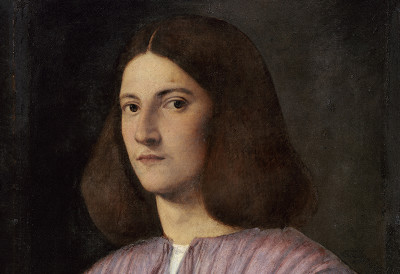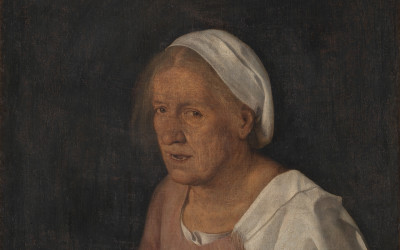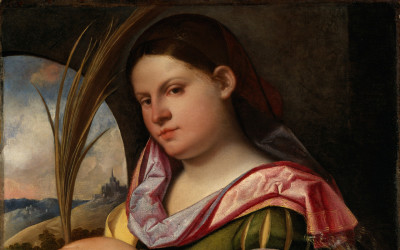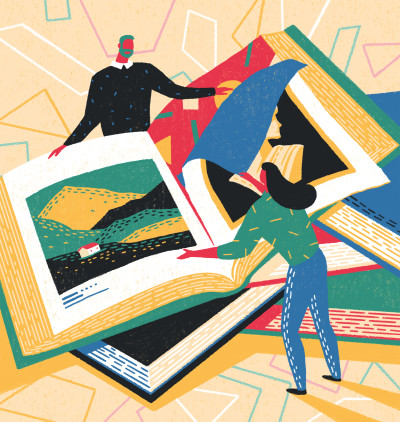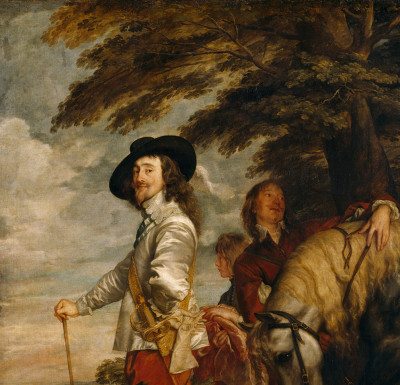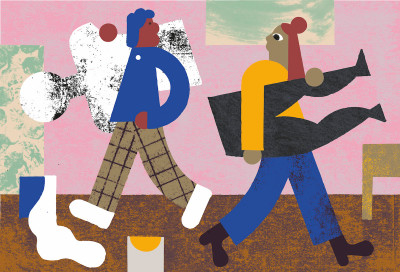Debate: should we care about attribution?
By David Ekserdjian and Doug Fishbone
Published 29 February 2016
If we can’t tell by looking at a work, does it matter who painted it? Or does knowing the authorship increase our understanding? An artist and an art historian go head to head. Pick your side and vote below.
-
From the Spring 2016 issue of RA Magazine, issued quarterly to Friends of the RA.
-
Yes...
Knowing who made a work gives art its context and connections, says art historian David Ekserdjian.
In the tricky and treacherous kingdom of attribution, Giorgione – the central subject of the Academy’s new show – represents a peculiarly acute challenge. Everything points to the fact that he had an exceptionally short career, he almost never did us the good turn of signing his works, and few scholars or experts seem to agree about what he produced. Our only real help is an early, and seemingly entirely reliable, listing of paintings by him – and other artists – compiled by a man called Marcantonio Michiel, which for example allows us to say with reasonable confidence that the Tempest in the Accademia in Venice is by Giorgione.
Put simply, there are certain benefits to be gained by seeing a particular painting, drawing or sculpture as part of a bigger picture. In a way, that is the primary purpose of the history of art. Works of art never existed in a vacuum, and they never should.
Two of the most fundamental ways in which it is possible to give works of art a broad context is in terms of their approximate date and place of origin. Even if we cannot agree on exactly what Giorgione painted, it seems fair to say that all of the works that are candidates look as if they belong to the Venetian school of art and were created around the early 16th century. The third way of placing works of art is connected with individual authorship. In those cases – as for example with living artists – where there is in effect no uncertainty about which works are by them, it seems natural to want to chart their stylistic evolution across time, to make connections that are illuminating. Moreover, not all artists sign, but those who do presumably want us to know they were responsible for their works.
-
Works of art never existed in a vacuum, and they never should.
David Ekserdjian
-
Especially in the past, the nature of artistic training meant that it was often possible to work out not just roughly where a given artist had learnt their craft, but specifically who had taught them. Interestingly, around the time of Giorgione, a number of pupils of the greatest Venetian painter of the previous generation, Giovanni Bellini (who outlived Giorgione), actually included that information with their signatures, and refer to themselves as his “disciples”. Moreover, artists have often also spoken eloquently about the more general inspiration they have drawn from their great precursors or contemporaries. All of these links increase our understanding of the millions of individual pieces that go to make up the puzzle that is the history of art.
If we had a time machine and could go back and watch Giorgione and co. painting, it would solve all sorts of problems – and might put some of us out of a job. No doubt it would reveal that we have got any number of attributions horribly wrong – already, discoveries of overpainted signatures or of legal contracts frequently prove similarly humbling. However, our fallibility does not mean we should not try to get it right, just that it is not always possible to succeed.
It is as well to admit there are drawbacks and two of them probably outweigh all the others. The first obviously involves name worship – the bad habit of judging on the basis of the label and not the work. The second is connected with it, and concerns the commercial value of certain magic names in the art market. Oddly enough, especially when it comes to Old Masters, this is less of a problem than might be supposed, because the range of prices paid for different works by the same artist can be immense, and will depend on all sorts of non-name factors.
At the same time, a completely anonymous work of art can sell for a fortune. If what is an excellent candidate for that most mysterious old masterpiece of them all, the Wilton Diptych in the National Gallery, came up at auction, you can bet your bottom dollar it would break all the records.
David Ekserdjian is Professor of Art and Film History at the University of Leicester.
-
No...
Even experts can’t tell a fake from the real thing, so the name of the artist is irrelevant, says artist Doug Fishbone.
In 1957, the National Gallery purchased a work by Rembrandt titled An Old Man in an Armchair. About a decade later, the painting was demoted and attributed to a “follower of Rembrandt” and then in 2014, it was reattributed to Rembrandt by one of the world’s leading authorities. Its authorship remains disputed.
In 2013, a landscape attributed to “a follower of Constable” was sold by Christie’s on behalf of a client for £3,500. Later confirmed as an original, the new buyer off-loaded it for a cool £3.5 million. Whatever these instances might say about due diligence and professional expertise, such stories, like tales of finding a masterpiece in a yard sale or in Grandma’s attic, capture the imagination of the public in a powerful way. People tend to be fascinated by the question of how art is valued. Getting back to attribution, aside from financial implications, does it really matter who painted a given work? Would someone gazing at the Rembrandt in 1968, when the label indicated one thing, have a markedly different experience to someone seeing it after its demotion, in 1969?
In one famous experiment on wine drinkers at the University of Bordeaux in 2001, the same wine was presented with two different labels, one identifying it as a Grand Cru, and the other as cheap plonk. The very same wine triggered strongly opposite responses based on what people thought they were drinking, confirming that people think wine tastes much better when they are convinced it is expensive. (Another test revealed that many experts could not even distinguish between a red and a white that had been tinted red with food colouring, putting the lie, perhaps, to the notion of professional connoisseurship.)
-
How might cognitive bias towards an artist influence our experience of viewing art and forming opinions?
Doug Fishbone
-
It would be intriguing to conduct analogous tests in a museum setting, to see how such cognitive bias towards an artist might influence our experience of viewing art and forming opinions. How distinctly can we separate the context of what we are looking at, and the expectations and pretensions we bring to it, from the object itself?
Hard to say, but my own experiment Made in China at London’s Dulwich Picture Gallery in 2015, in which I replaced one of the collection’s masterworks with an inexpensive Chinese replica, might be suggestive. Almost 90 per cent of viewers who were polled – including several well-known art critics – were unable to spot the inauthentic painting among the originals, and one can assume that some visitors were unaware that my project was taking place, thus having an otherwise completely normal gallery-going experience. To them, will it have mattered who actually made the “Fragonard” we swapped?
The question of forgeries makes the attribution issue even more difficult. One former director of the Metropolitan Museum of Art wrote that 40 per cent of all the works art he considered purchasing for the museum were inauthentic, and some suggest up to 20 per cent of work held by museums is misattributed. Whatever the real figures are, it’s a fair bet to say we cannot necessarily trust that what we are looking at is what we are told it is. And this goes for many experts as well.
So at the end of the day, does it matter to whom an artwork is attributed? In the case of Congo the chimp, whose abstract paintings were exhibited at the ICA in 1957 to great acclaim, I would argue yes, at least from an ontological standpoint. After all, knowing it was made by a monkey might affect our ability to define it as art in the first place, since that category might only encompass things created by humans. But in most other instances, if we are completely honest about it, probably not.
Doug Fishbone is an artist based in London.
-
-
Enjoyed this article?
Become a Friend to receive RA Magazine
As well as free entry to all of our exhibitions, Friends of the RA enjoy one of Britain’s most respected art magazines, delivered directly to your door. Why not join the club?

-

